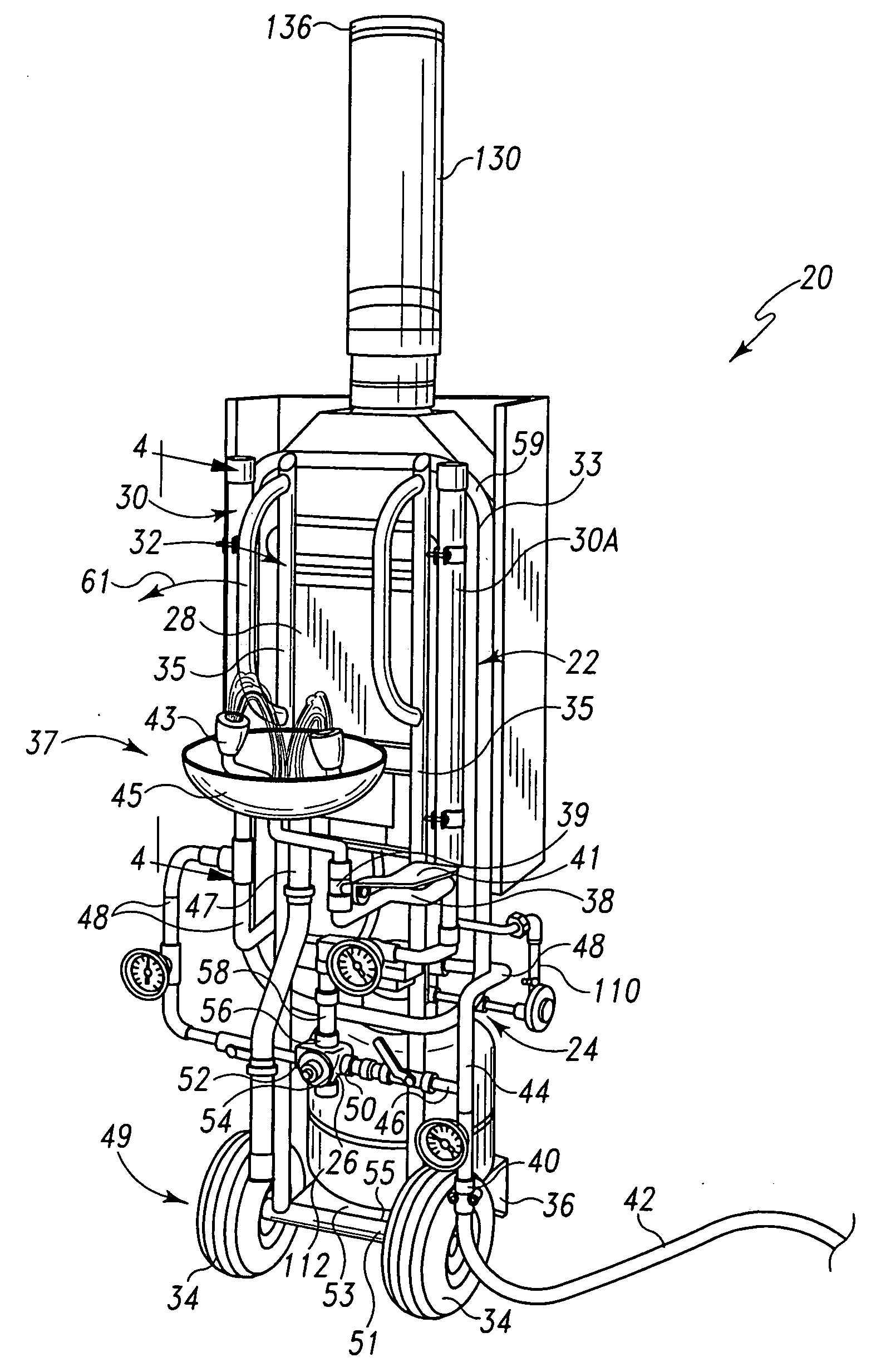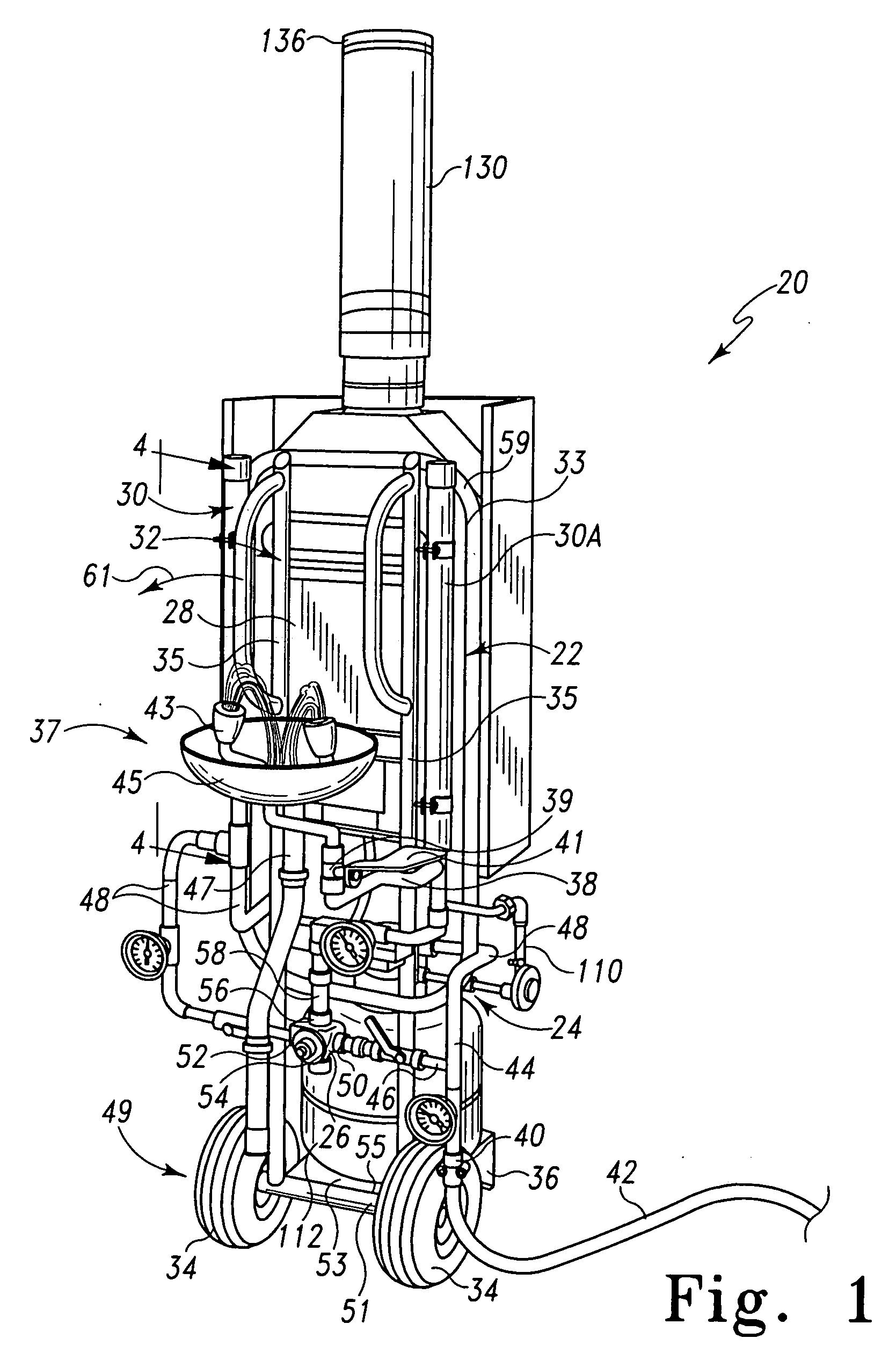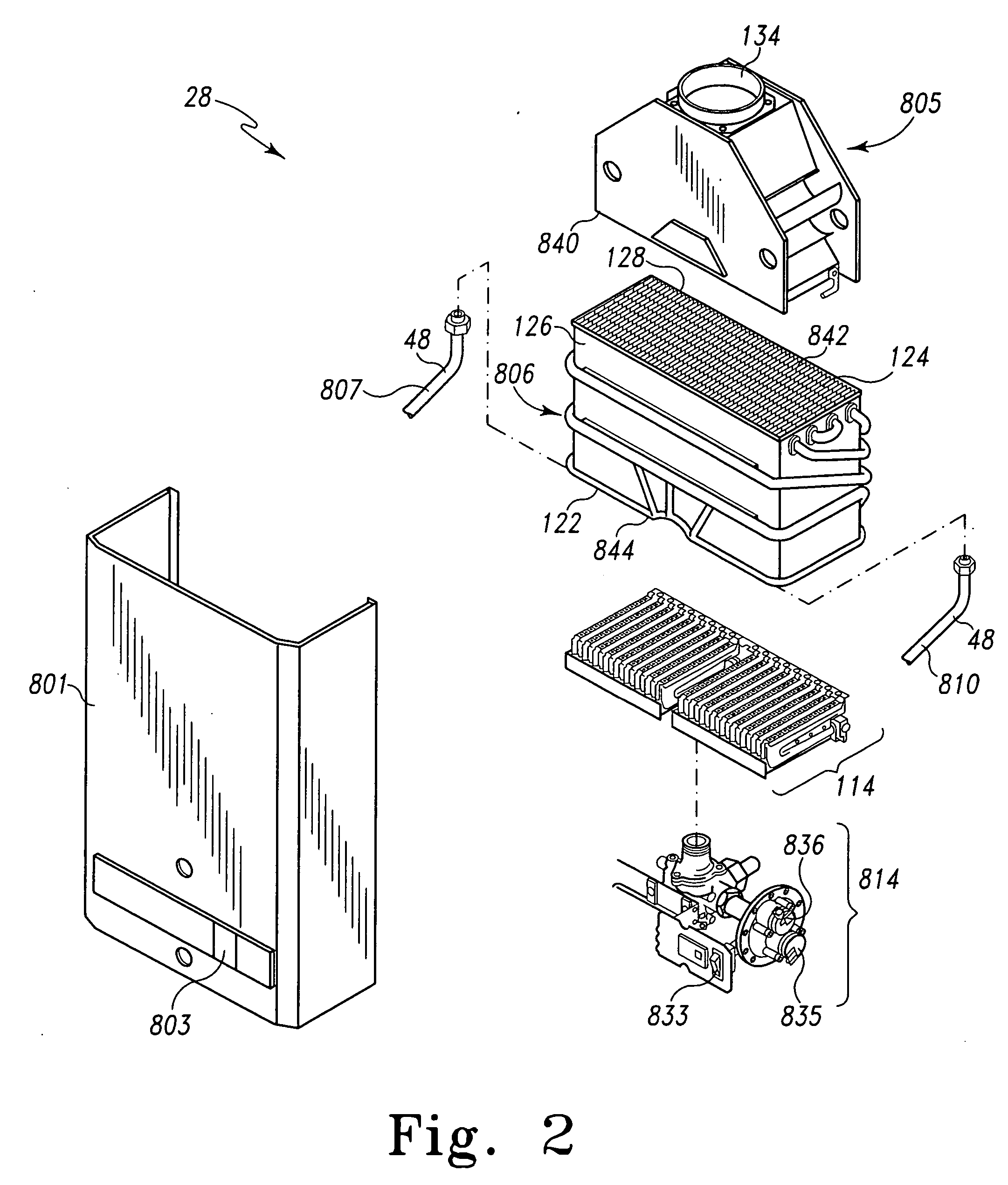System and method for providing tempered fluid
a technology of tempering system and fluid, which is applied in the direction of process and machine control, physical therapy, instruments, etc., can solve the problems of reducing the duration of use of emergency equipment, affecting the quality of fluid provided, so as to reduce the flow of cold fluid, increase the temperature of mixed fluid, and increase the flow
- Summary
- Abstract
- Description
- Claims
- Application Information
AI Technical Summary
Benefits of technology
Problems solved by technology
Method used
Image
Examples
example 1
[0122]
TABLE 1TemperatureTemperatureTemperaturePressure of hot(° F.) of(° F.) of(° F.) ofwater at mixingTimeCold WaterHot WaterMixed Waterpoint3:00:42 PM43.4509171.784.63361.923:00:52 PM43.3573171.92484.81983.023:01:02 PM43.3417172.6785.61646.553:01:12 PM43.4275173.252144.0856.403:01:22 PM43.4119173.739165.6077.143:01:32 PM43.4275174.084169.9026.423:01:42 PM43.4509174.396171.4837.073:01:52 PM43.5757174.592171.9856.913:02:02 PM44.0981174.896172.6836.653:02:12 PM45.1031175.031172.926.813:02:22 PM46.2003175.024173.347.123:02:32 PM47.0322175.207173.4897.123:02:42 PM47.7779175.274173.6387.113:02:52 PM48.3911175.301173.8076.983:03:02 PM45.5001175.288173.6993.033:03:12 PM44.2462175.031121.812.323:03:22 PM44.1292174.59295.17761.993:03:32 PM43.9032174.49791.03162.853:03:42 PM43.9655174.16689.28463.013:03:52 PM44.1994173.93688.49881.583:04:02 PM43.7784173.82187.97952.063:04:13 PM43.5133173.63187.86072.733:04:23 PM43.3495173.57787.60831.673:04:33 PM43.2715173.3683.15731.273:04:43 PM43.1544173.2...
PUM
 Login to View More
Login to View More Abstract
Description
Claims
Application Information
 Login to View More
Login to View More - R&D
- Intellectual Property
- Life Sciences
- Materials
- Tech Scout
- Unparalleled Data Quality
- Higher Quality Content
- 60% Fewer Hallucinations
Browse by: Latest US Patents, China's latest patents, Technical Efficacy Thesaurus, Application Domain, Technology Topic, Popular Technical Reports.
© 2025 PatSnap. All rights reserved.Legal|Privacy policy|Modern Slavery Act Transparency Statement|Sitemap|About US| Contact US: help@patsnap.com



